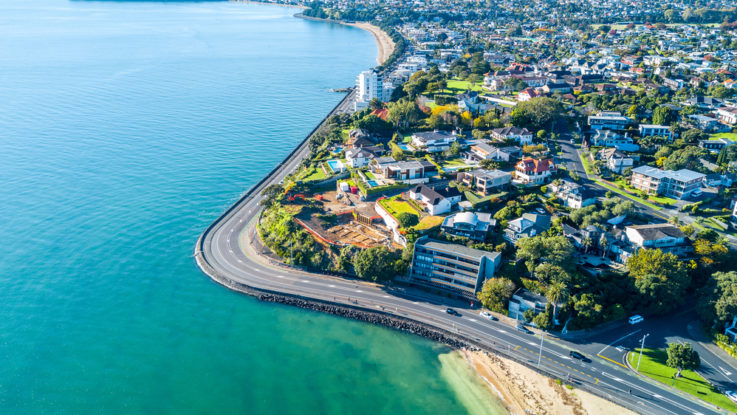
Auckland, New Zealand, has begun a trial of living bus shelters in two of its suburbs with more than 1,000 plants planted in their walls and roofs. The project is thought to be the first of its kind in New Zealand.
“Green buildings provide a range of benefits—they absorb carbon, improve air quality, soak up stormwater and support biodiversity for native insects,” Mayor Phil Goff said. “Increasing the amount of green space in our city will make it more pleasant, liveable and environmentally sustainable, while contributing to our other efforts to tackle climate change such as introducing zero-emission buses on our public transport network.”
Auckland Transport (AT) states that the trial will look at the viability of installing more green infrastructure throughout Tāmaki Makaurau, a large metropolitan city in the North Island of New Zealand. Lessons from the trial will be applied to the ongoing Auckland Transport work programme – Greening Our Network – which seeks to increase the ecological function of the region’s road corridors.
“Green roofs and green walls are a really important part of how Auckland Transport responds to climate change,” said Dr Cathy Bebelman, environmental specialist at Auckland Transport. “One of the significant benefits is that green infrastructure like this also reduces temperatures on hot days. In the city there are lots of hard surfaces that hold the heat in. Plantings in these areas absorb this radiant heat, which means pedestrians and wildlife are less susceptible to the negative effects of high temperatures, like heat stroke.”
One of the living bus shelters has been installed near a local school, and AT is working with the school’s environmental team to teach children about green buildings.
“They are ambassadors for the living bus shelter and will monitor the vegetation and educate others about the trial. They are looking forward to making sure that it’s looked after and respected,” Bebelman stated.